[vc_row][vc_column][vc_column_text]Author: Luke Martin[/vc_column_text][vc_empty_space height=”20″][eltdf_button type=”simple” text=”Back to Blog” target=”_self” icon_pack=”font_elegant” fe_icon=”arrow_carrot-2left” font_weight=”” text_transform=”” link=”https://learnmycraft.com/the-artist-blog/”][vc_empty_space height=”20″][vc_separator align=”align_left” border_width=”5″][vc_empty_space height=”20″][vc_column_text css_animation=”none”]Murals, street art, and graffiti in York are becoming more common than ever before in urban areas, but how do people view this new form of art and what do they think about it? We polled the residents of the historic city of York in the UK to find out more.
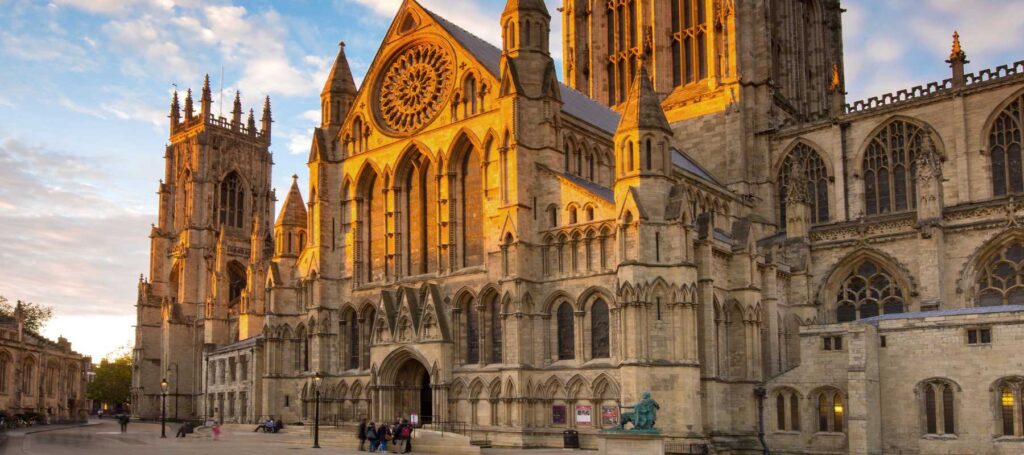
The issue of graffiti has been a topic of debate in York for many years. On one hand, the city has been home to some of the street art scene’s most prominent names, and on the other hand, many local residents have been appalled at graffiti daubed across parts of the City Walls, York Minster, and other historic buildings. As street art becomes more widely accepted as a part of our culture, have attitudes towards graffiti shifted, and if so, what should be done about how we deal with the issue in our communities?
We set up a focus group of 83 local York residents to ask their opinions and hear their experiences, and they didn’t hold back! The focus group revealed some interesting and often surprising data. Although you might expect residents to be appalled at the idea of graffiti and street art in the city, many residents took a much more progressive view. The results call into question the council’s zero-tolerance approach to graffiti and ask whether we need to update policy to reflect changing attitudes.
Key Findings:
- 84% think City of York Council should provide a designated area for graffiti artists
- 12% think graffiti is a serious problem in York
- 66% don’t think the removal of graffiti should be a priority for City of York Council
- 62% believe the presence of graffiti in the city has no impact on its reputation or image
- 3% admitted to having contributed to the creation of graffiti in York
Lots of participants felt that there was a clear difference between graffiti as vandalism and graffiti as street art:
“All of my answers given were based on amateur graffiti, as opposed to actual street art that has been commissioned. I’d love for more commissioned art around the city center.”
“Obviously defacing an ancient monument would be vandalism. On the whole, it benefits an area.”
“Graffiti is garbage, organised street art is acceptable in a public forum”
Many participants felt that graffiti could add to the character and vibrancy of certain areas, and called for more street art in the city:
“When allowed to be treated as an art form, graffiti can be beautiful and exciting, adding vibrancy and interest to an often otherwise dull, industrial landscape.”
“I know Friends of Leeman Road and similar groups mean well and do a lot of positive things, but they have repeatedly removed graffiti which I thought was charming and creative. Graffiti is often better than grey concrete!”
“There is a tunnel under the railway and two people are seemingly having a graffiti war. Ine writes homophobic stuff and another writes over it. It’s really puerile but weirdly amusing. and “I LOVE SWEET PEA” has been on Holgate Road all my life (40) so it’s almost a part of the area.”
“All of my answers given were based on amateur graffiti, as opposed to actual street art that has been commissioned. I’d love for more commissioned art around the city center.”
“Graffiti done by people with passion, which is usually found in places like underpasses, or hard-to-reach areas (bridges, trains etc) can add a certain appeal to an area.”
Some participants expressed concern about graffiti and were against it appearing in the city:
“Graffiti should never be allowed, especially in a beautiful and historical city like York.”
“I’d like the graffiti to stop and be removed”
Participants suggested that having a designated space for graffiti in York is the most effective way to manage it:
“When an authority attempts to crack down on free expression of art, then by being pushed underground, the quality of the art suffers and becomes more political and expressive of a darker, anti-social culture. The best way to have high-quality art is to allow it space to exist, encourage it, and reward those who are able to express their feelings about society within the community in which they live.”
“I would not want to see it everywhere I go, but contained to these areas I feel it a useful outlet.”
“For graffiti artists to become street artists they do need does need somewhere to grow, as an entirely valid grassroots discipline”
Conclusions
The focus group found that attitudes to graffiti changed depending on the nature and location of the artwork. There was a clear distinction made between tags as vandalism and graffiti as decorative street art murals and decorations. Residents were broadly in favour of more street art, and supportive of street art in York.
Respondents did not see graffiti as a big problem in the city. The group recorded overwhelming support (84%) for a dedicated graffiti area in the city, with the view that it would improve the quality of the work and offer artists a legal place to express themselves.
The findings represent a shift in public attitude that should be considered by York City Council. As attitudes change, policy should change with it and allow more street art to be integrated into urban spaces to make them more interesting, creative, and vibrant.
A Brief History Of Graffiti In York
York has a long history of graffiti, and its presence in public spaces is nothing new. The Yorkshire Museum is home to a number of exhibits featuring graffiti dating back as far as Roman times.
The historic Minster features graffiti from the early 18th century, likely the work of masons and stained glass artists leaving their mark with scratched and carved engravings into the glass and stone.
This morning we’ve been documenting graffiti on the cell walls created by prisoners in the 18th and 19th century. Some of this graffiti is behind museum displays, so keep an eye out on this page in the near future for a closer look at these hidden markings! pic.twitter.com/GqthxPIpiI
— York Castle Museum (@YorkCastle) February 20, 2020
The 18th and 19th centuries saw prisoners at York Castle graffiti on the stone walls of their cells.
The 20th century saw a new wave of graffiti artists emerge from the city. Artists like Seph, Richard Shipley, and Part2 grew to global prominence by pioneering new styles.
In recent years, York street artists like Harriet Wood are gaining global recognition for their work.
The 2010s saw a crackdown in so-called ‘legal’ spots such as Bishopthrope bumps, and the council started taking a more zero-tolerance approach to graffiti in the city. Recent incidents of offensive and racist graffiti on historic buildings in York have been widely reported.
In November 2022, The University of York hosted the Second National Symposium For The Study Of Historic Graffiti.
Data
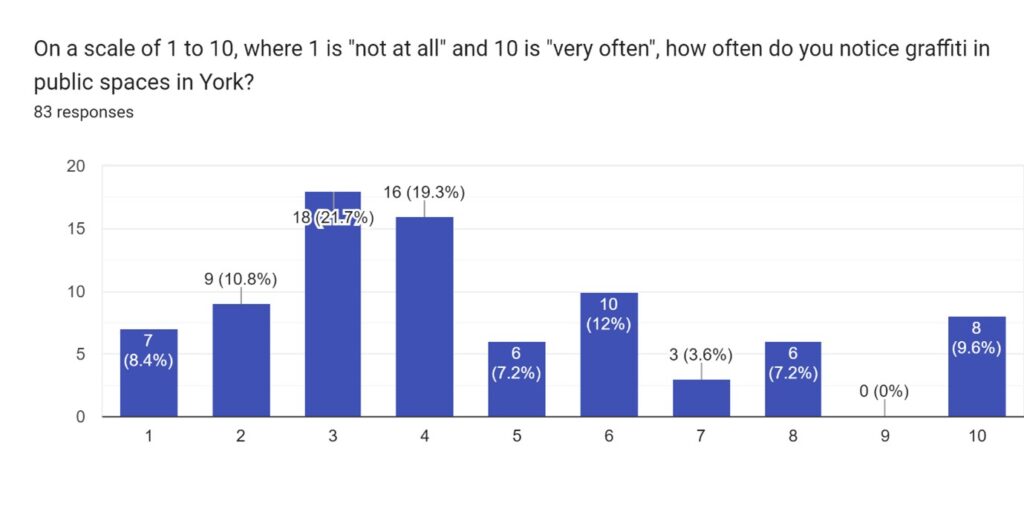
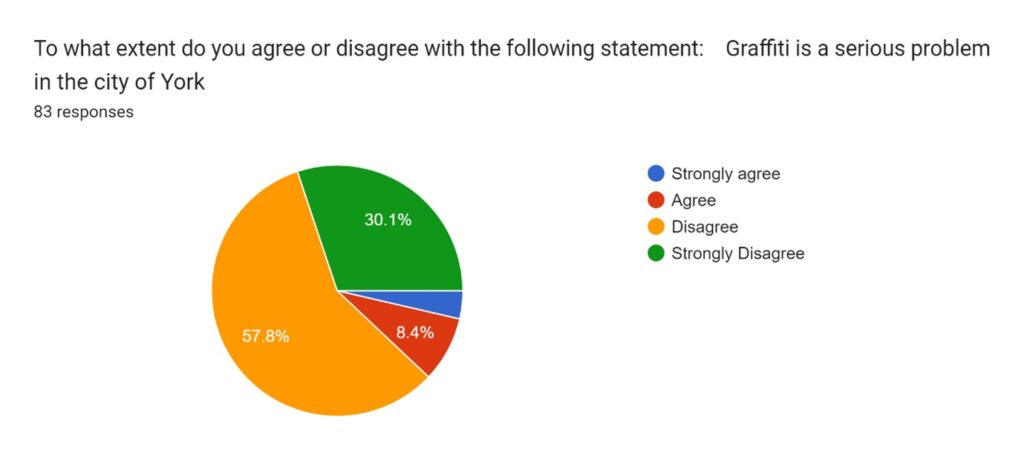

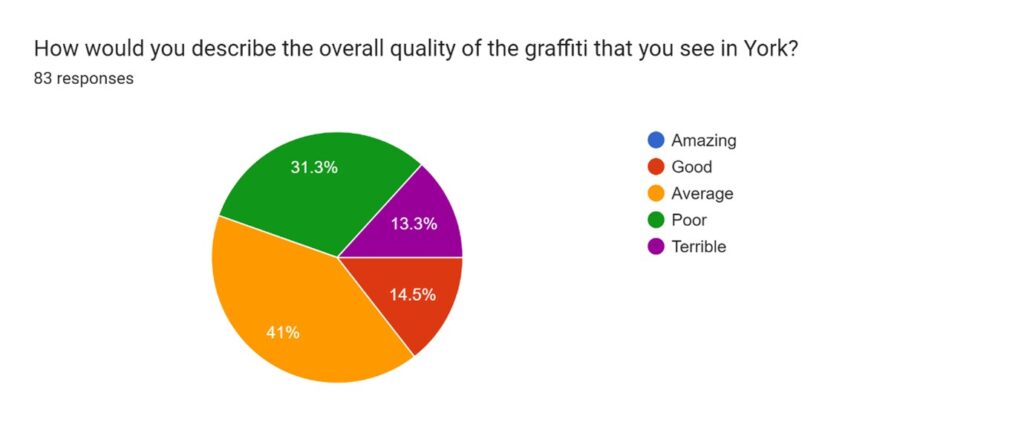
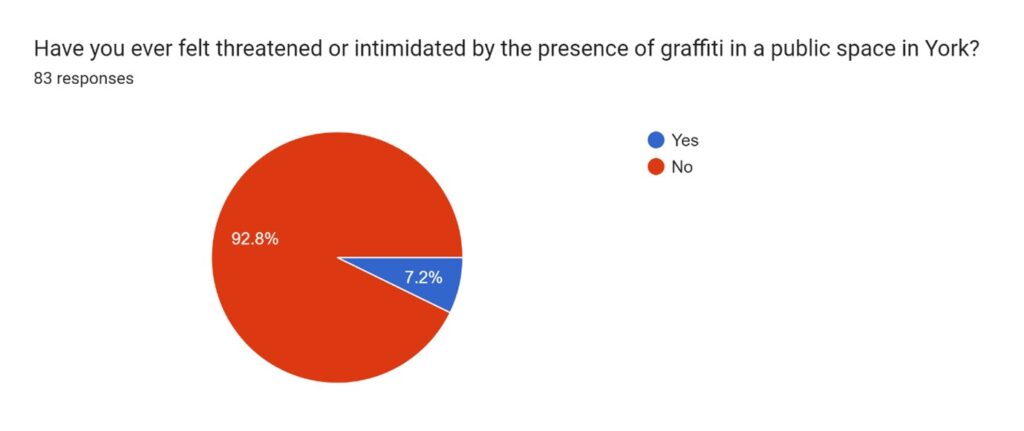
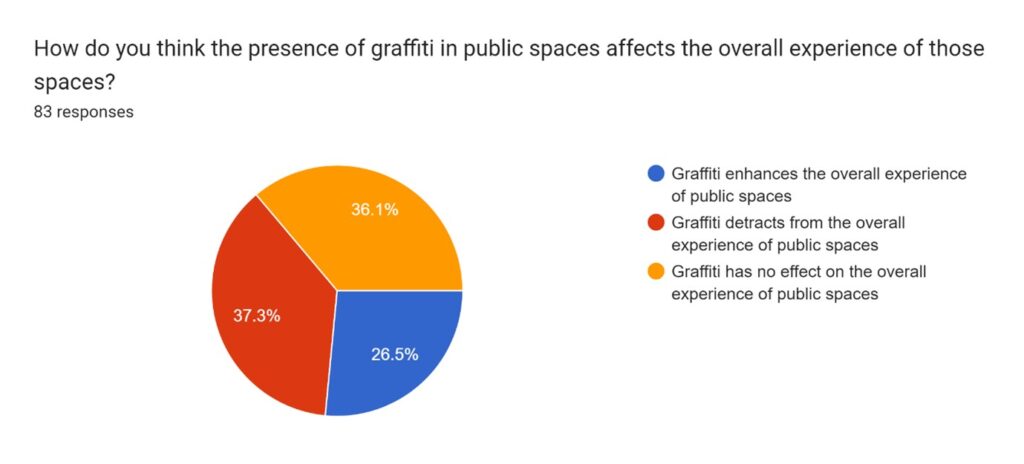
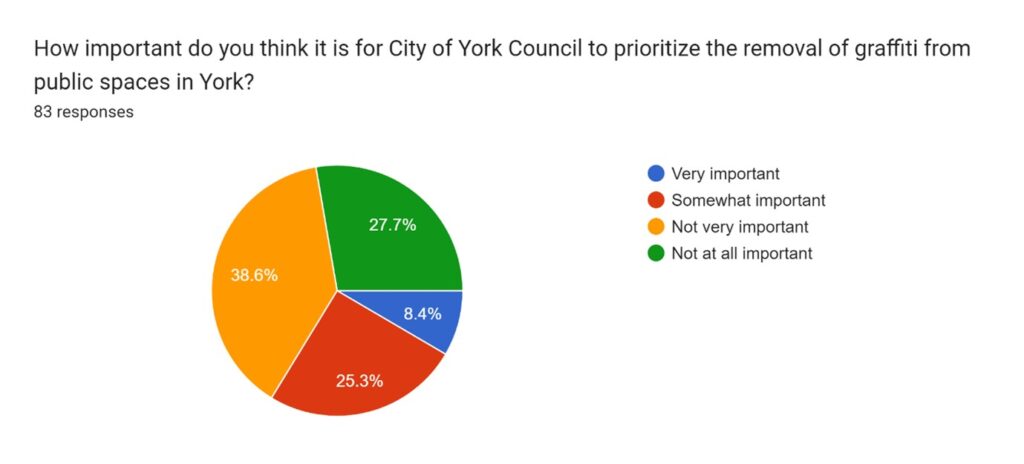
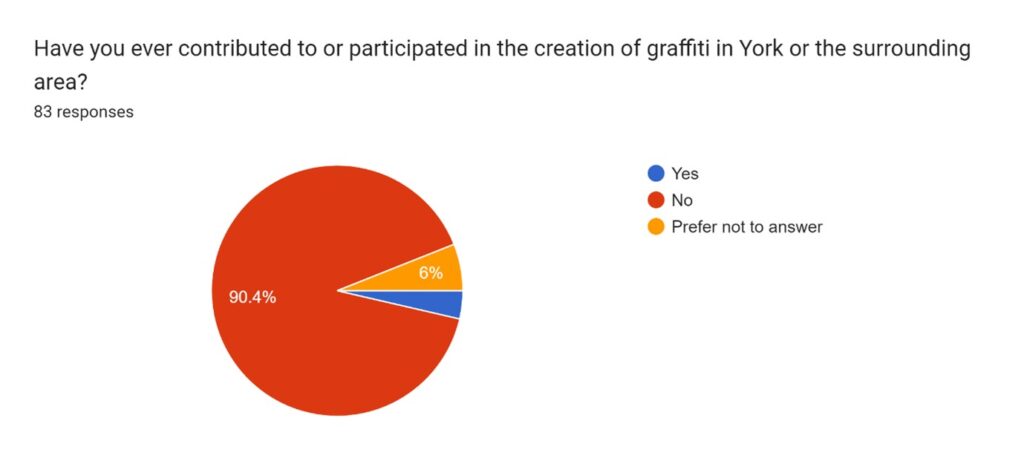
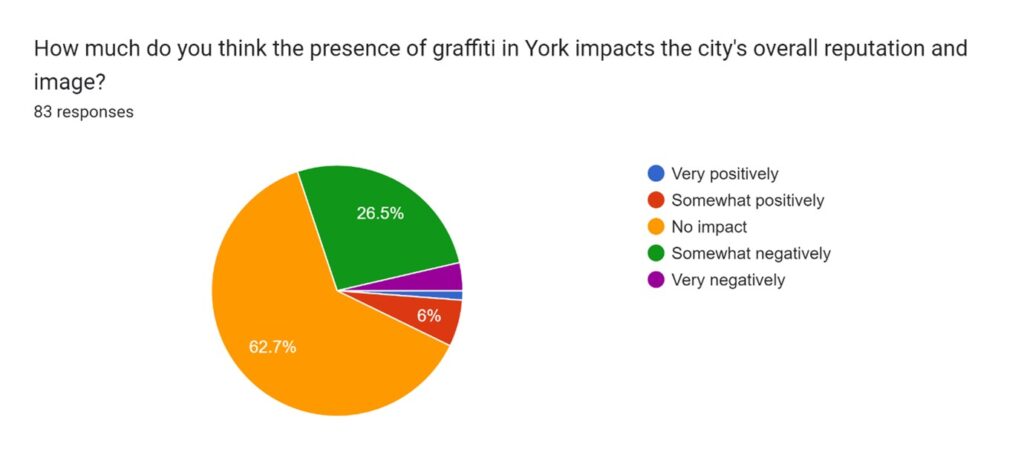
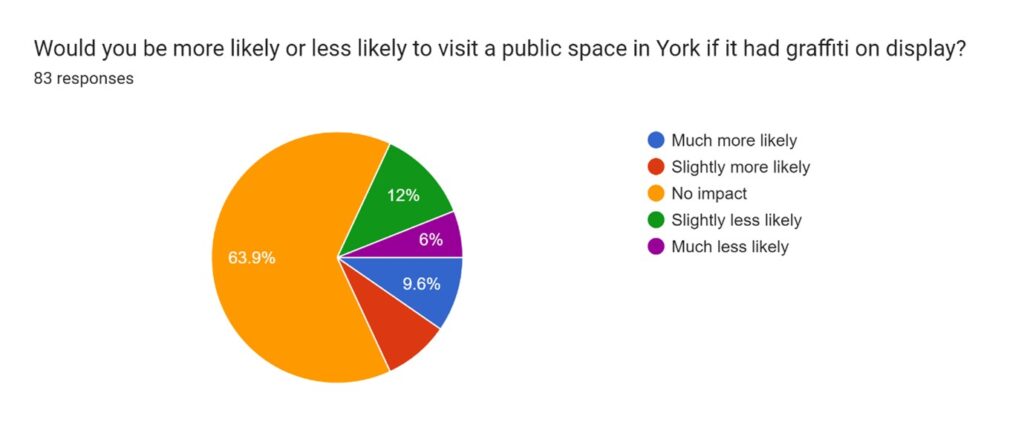
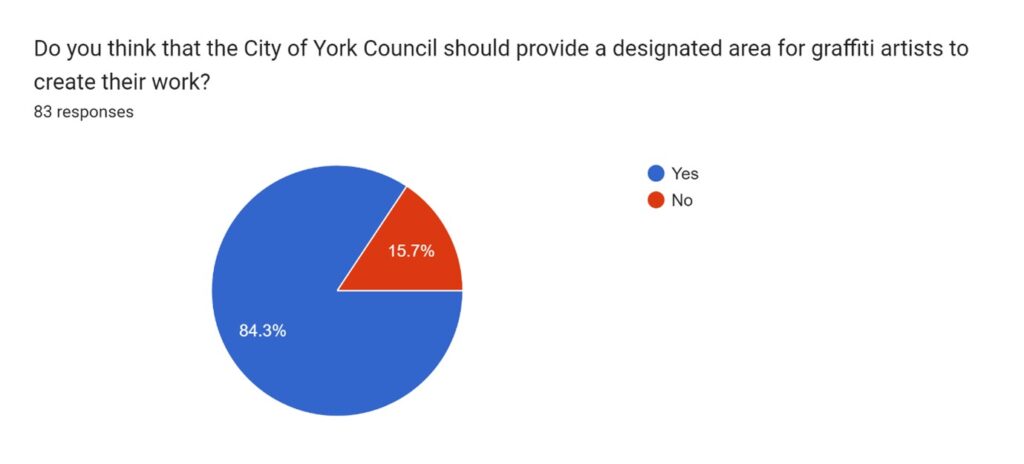
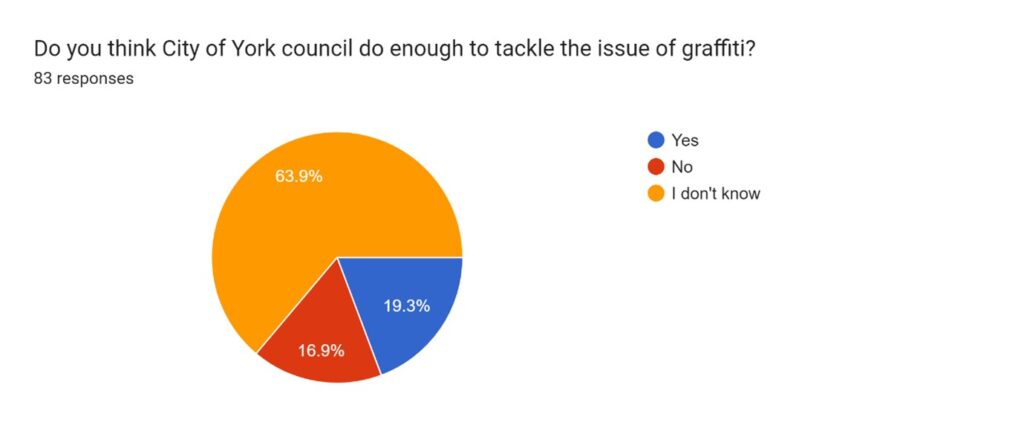 [/vc_column_text][eltdf_accordion][eltdf_accordion_tab title_tag=”h3″ title=”Comments from Participents”][vc_column_text]
[/vc_column_text][eltdf_accordion][eltdf_accordion_tab title_tag=”h3″ title=”Comments from Participents”][vc_column_text]
- There’s a difference between graffiti as art and graffiti as vandalism – Reykjavik is a cracking example of graffiti as public art with very few crap tags
- I know Friends of Leeman Road and similar groups mean well and do a lot of positive things, but they have repeatedly removed graffiti which I thought was charming and creative. Graffiti is often better than grey concrete!
- All of my answers given were based on amateur graffiti, as opposed to actual street art that has been commissioned. I’d love for more commissioned art around the city centre.
- Graffiti and street art are two different things. Tags and symbols are not art. The creations at The Spark, for instance, are what I would consider street art. Tags and symbols are not threatening, but they don’t enhance an area at all, whilst mural type creations potentially do.
- Graffiti, as I’m sure you know, takes many forms. Tags and scrawlings are very different to a well thought out mural or political statement. They all have their place, but the murals are the ones that should be encouraged.
- Graffiti should never be allowed, especially in a beautiful and historical city like York.
- Obviously defacing an ancient monument would be vandalism. On the whole it benefits an area.
- There’s not that much about really, it’s quite a minor thing in York.
- I think there’s a difference that needs to be highlighted between good graffiti and bad graffiti. Low effort tags on public property in clear view (e.g. bus stops) is generally not a good thing and in my view it’s often done by people with no interest in graffiti, to the extent that I would class that as vandalism. However, graffiti done by people with passion, which is usually found in places like underpasses, or hard to reach areas (bridges, trains etc) can add a certain appeal to an area.
- More specifically to York, is the location of graffiti. I can’t imagine a large appreciation for graffiti on historical buildings, such as the minster or the city walls, but in more industrial areas graffiti can find a place.
- When allowed to be treated as an art form, graffiti can be beautiful and exciting, adding vibrancy and interest to an often otherwise dull, industrial landscape.
- When an authority attempts to crack down on free expression of art (a common trope of fascism), then by being pushed underground, the quality of the art suffers and becomes more political and expressive of a darker, anti-social culture.
- The best way to have high-quality art is to allow it space to exist, encourage it, and reward those who are able to express their feelings about society within the community in which they live.
- This is true of all art-forms including graffiti, music, poetry etc. Let it be free.
- Ah good, the sea
- I feel there is a huge difference between vandalism/protest type graffiti e.g. Spray painting ‘eat the rich’ (this makes me feel less safe) and art type graffitive e.g where an artist paints a landscape or animal (this makes me happy). I went on a graffiti tour in East London and was amazed by the quality of the paintings. High quality grafitti art would attract tourists and would give residents access to free art.
- It’s the racist graffiti that is a problem but the survey doesn’t take account of this in the questions
- Graffiti is a cool form of art as long as it is at a space where it’s allowed and not trespassing or upsetting the owners
- The questionnaire is unclear what they mean by “graffiti”. If you are referring to stereotypical illegal tagging style graffiti my responses would be very different to commissioned street art like you can see in the alley on Coney Street. Whilst coming under the same term they are very different.
- For graffiti artists to become street artist they do need does need somewhere to grow, as an entirely valid grassroots discipline. There is often a large body of ever changing graffiti on the orbital path especially near Clifton. Whilst crude and messy I feel these large blank walls are a good place for growing artists to practice and express themselves. I say this as a parent of a young child who uses the path regularly. There is very little offensive content contained in their work and it is nice to see pure creativity. I would not want to see it everywhere I go, but contained to these areas I feel it a useful outlet.
- Offensive graffiti should be removed (slurs, hate symbols) but otherwise it’s an interesting art form
- My answers assume you are asking about actual graffiti art and not just tags of names or drawing of genitals etc
- York does need more street art, which isn’t graffiti.
- The only graffiti I hate are phallic drawings in areas which are visible to my children.
- I’d prefer we didn’t have any graffiti, especially on the Foss Islands Path.
- I have noticed some sorry excuses of graffiti appear, by probably bored youth who are trying to be something they aren’t. This isn’t London, but unfortunately bored youth are assuming the ‘cool’ and ‘bad’ behaviour of large metropolitan cities like London. It is sad and embarrassing, as this is York, a nice little town and not some crime ridden haven with gangs and roadmen wondering. I’d like the graffiti to stop and be removed, but ultimately it isn’t a big deal and I think the council has larger fish to fry, either ones that directly impact me and those that don’t at all. If the council see’s graffiti, it should be dealt with and cleaned. But thats it. We don’t need an anti graffiti team setup or anything crazy. The focus should be on larger issues, such as lowering housing prices or increasing public services.
- The penultimate question is on point. Bishopthorpe bumps was the last legal wall York had and it was taken away 10 years ago. It’s now back running as what I’d consider to be a tolerated spot. People seem very interested in graffiti when they see it happening in front of them and can engage with the creatives that usually aren’t as unruly as the media or council may have portrayed. Graffiti is a widely misunderstood subculture unlike it’s largely estranged sibling street art which is community aimed and neatly packaged up into something the general population can relate to on some level. I don’t know what the aim of this survey is but I’d love it to be something beneficial to Yorks scene which is below par at best. Did you know that York has had some very talented and respected writers (some turned artists) come out of it? It was considered to be at the forefront of the movement stylistically by many. Part2 with his photo realistic/surrealist pieces. one of which you can still see in Sainsbury’s carpark on foss island, further more it was done with car paint in the early 90s which you may not know is so much harder to use than todays specifically graffiti tailored spray paints. Cage/Richard Shipley (rip) & Seph and the rest of the MTV lot. Plus many many more, were pioneering graffiti writers widely respected nation wide. Hope this helps in some way.
- Graffiti is garbage, organised street art is acceptable in a public forum
- there is a tunnell under the railway and two people are seemingly haviing a garaffiti war. Ine writes homophobic stuff and another writes over it. It’s really purile, but weirdly amusing. and “I LOVE SWEET PEA” has been on Holgate Road all my life (40) so it’s almost a part of the area.
[/vc_column_text][/eltdf_accordion_tab][/eltdf_accordion][vc_empty_space height=”50px”][/vc_column][/vc_row]
